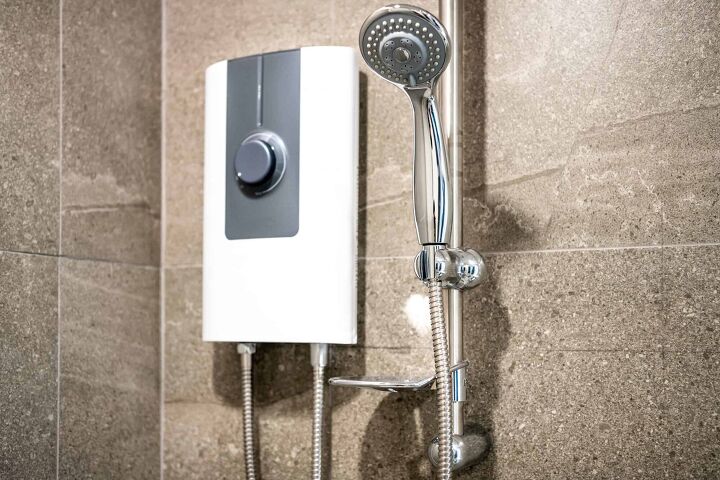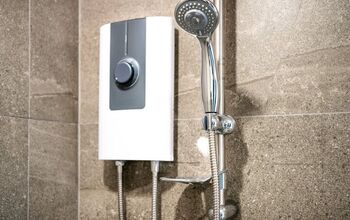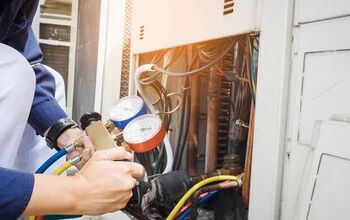Can A Tankless Water Heater Fill A Tub?

For many years, the tankless water heater has been a popular alternative to conventional tank water heaters in Europe and throughout the world. However, North American consumers have only just recently discovered the benefits involved with tankless water heaters.
Instead of heating and storing water in a large tank in your home, the tankless water heater heats and delivers water on demand. It circulates water through a series of electric coils and burners before it eventually passes as hot water through a faucet or other appliance.
Technically, since the system doesn’t store water, it never runs out of hot water. So, one might assume that if you have a tankless water heater in your home, you’d be able to completely fill up a large bathtub, but there’s actually more to the story. A tankless water will not run out of hot water unless the flow of water exceeds the heater’s heating ability.
To put it more simply, a tankless water heater can fill a tub, but only if another fixture or appliance isn’t also using the hot water. We’ll further explore the reasoning behind this as well as provide you with all the benefits and downsides involved with owning a tankless water heater.
How a Tankless Water Heater Works
Instead of the more conventional way of water being heated and held in a tank, with a tankless water heater, water is heated by moving through its system of coils and burners. The name is indicative of exactly what this unit does; provides hot water without the use of a tank.
Tankless water heaters do not store water, they distribute incoming cold water through a “heat exchanger,” or system of electric coils and gas burners. Whenever you turn on a hot-water tap in your home or begin using an appliance that requires hot water, the heat exchanger heats up. Then, when the appliance or fixture is turned off, the burners and electrical devices also shut off.
Advantages of Tankless Water Heaters
As previously mentioned, people all over Europe and other parts of the world have been enjoying the benefits of tankless water heaters for decades. Whereas, folks in North America have only just recently caught on. Here are some of the many advantages to help remind you why installing a tankless water heater in your home may be the way to go:
- Reduced water heating bill. If your family uses 41 gallons or less of hot water a day, a tankless water heater that services your entire home can reduce your water-heating bill by 24 to 34 percent.If you use more hot water on a daily basis, you can still save money. You’ll save about 8 to 14 percent on your bill.
- Conserve energy. Aside from saving you money on your utility bill, in general, tankless water heaters conserve around 27 to 50 percent more energy than traditional tank models.
- Endless supply of hot water. Without the use of a tank and as long as the flow doesn’t surpass the tankless water heater’s heating ability, the amount of hot water can be endless. We’ll further explain this in a later section.
- Less maintenance. Most water heater tanks need regular annual maintenance and, in some regions, they may need to be serviced every six months. Depending on your specific water supply, tankless water heaters can function properly for four to five years, without the need for maintenance.
- Longer life span. Sometimes lasting almost twice as long as traditional water heaters, the tankless variety has a significantly longer life span.
- Less storage space required. Tankless water heaters are much smaller and require less storage space than a tank water heater.
- Tax breaks. Since tankless water heaters are more efficient, they qualify for certain federal tax credits.
Disadvantages of Tankless Water Heaters
Like any appliance, although they may have a lot of benefits, there are still some disadvantages to consider. The downsides to a tankless water heater are as follows:
- More expensive. Tankless water heaters have a higher upfront purchase cost than conventional tank models. However, their energy efficiency will save you money in the long run.
- Pricey installation. This is typically based on the amount of retrofitting that your home may require for installation. Regardless, the installation of tankless water heaters will be more than the traditional options.
- Possible limited hot water supply. If the water flow does exceed the heater’s heating capabilities, you can run out of hot water. This will largely depend on your particular tankless water heater and the capabilities it has.
- Rerouting Gas Lines. As previously mentioned, some additional equipment is often required to install tankless water heaters. Your contractor may even have to reroute a gas line or install new venting, increasing the overall cost of the project.
Tankless Water Heater Flow
When you have a tankless water heater, you won’t worry about emptying the entire heater to fill a bath because there is no tank to empty. Your supply of hot water has the potential to be endless. However, with a unit like this, it’s not about the water capacity, it’s about the flow of water.
A tankless water heater will not run out of hot water unless the water heater’s heating capabilities cannot keep up with the flow of water. For example, if you have two showers and a dish washer running simultaneously, a tankless water heater will have trouble heating the large volume of water as it is quickly passing through the system. In this case, you will end up with lukewarm water coming out of your fixtures.
In order to avoid situations like this, you can purchase a unit that puts out a lot of heat. A more obvious solution would be to stagger the usage of your fixtures and appliances by a few minutes. This will give your tankless water heater enough time to catch up and effectively heat the water. Or you can consider the more expensive option of installing two tankless water heaters so the flow of water will never become an issue.
To further clarify, you can fill up a bathtub when you have a tankless water heater, but not when you have another appliance or several that are using the hot water. Also, if the faucet on your tub has a heavy flow, you might need to slow it down as you’re filling. However, the key to getting the most out of your tankless water heater is to purchase one that is sized appropriately for your needs.
What Is The Best Size Tankless Water Heater?
When you’re shopping for your tankless water heater, you need to think about flow rather than capacity. Like we mentioned, tankless water heaters don’t run out of hot water in the same way tank models do. However, it can have trouble servicing multiple fixtures at once and not be able to heat the water fast enough.
Let’s think about this in terms of British Thermal Unit (BTU), or the unit given to describe tankless water heater’s input and efficiency ratings. This unit helps determine the flow rate which is expressed in gallons per minute (GPM). One BTU equals the amount of energy needed to raise the temperature of 1 pound of water by 1 degree F.
The higher the BTU rating on your water heater, the higher flow rate. In normal circumstances, to deliver 1.2 GPM of hot water, it takes 31,000 BTUs. Flow rates for tankless water heaters will vary from about 1.2 to 6 GPM.
Use the following rules of thumb when searching for your tankless water heater:
- 2 GPM – provides hot water to only a single bathroom sink
- 6 GPM – handles one shower at a time
- 4 GPM – will handle one shower and one sink
- 6 GPM – handles at least two showers simultaneously

Jessica considers herself a home improvement and design enthusiast. She grew up surrounded by constant home improvement projects and owes most of what she knows to helping her dad renovate her childhood home. Being a Los Angeles resident, Jessica spends a lot of her time looking for her next DIY project and sharing her love for home design.
More by Jessica Stone



























